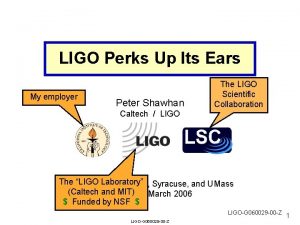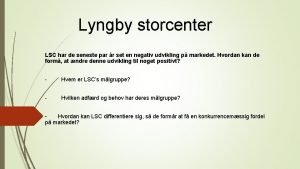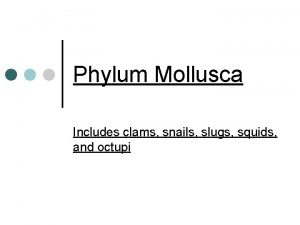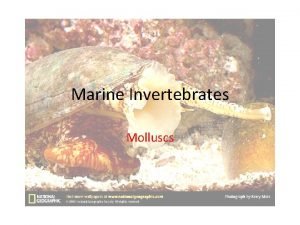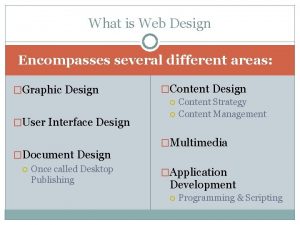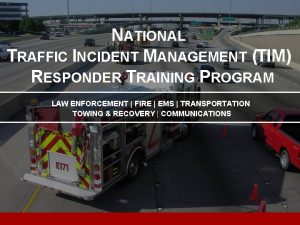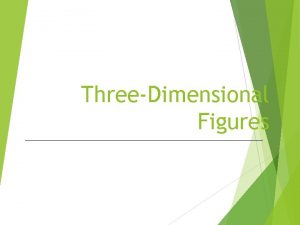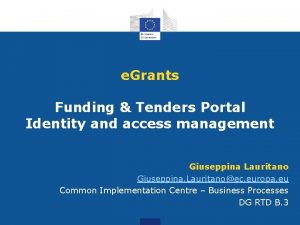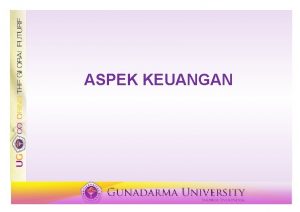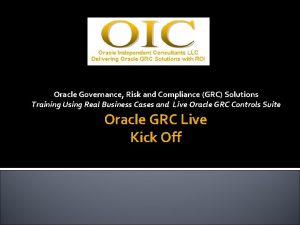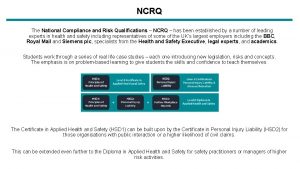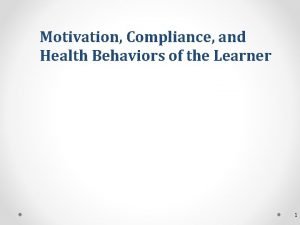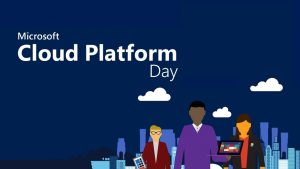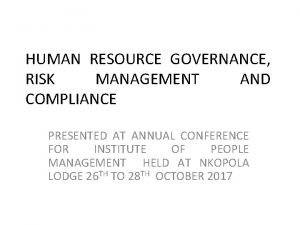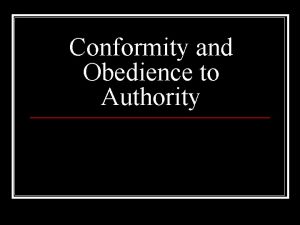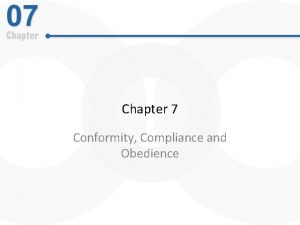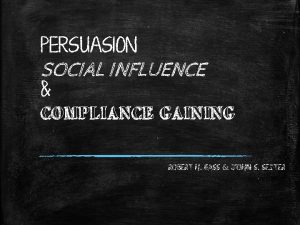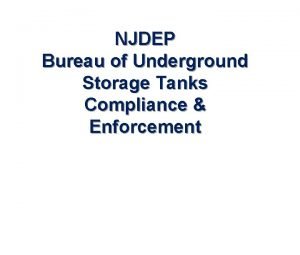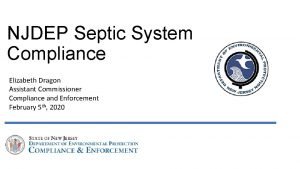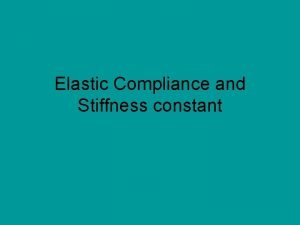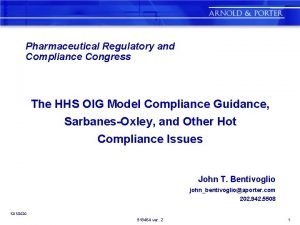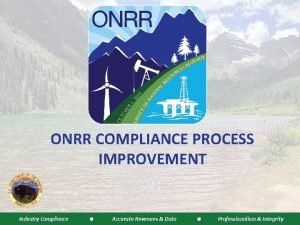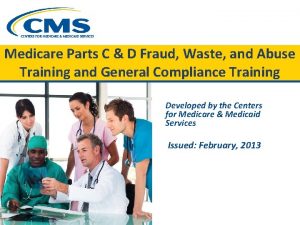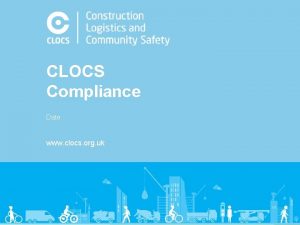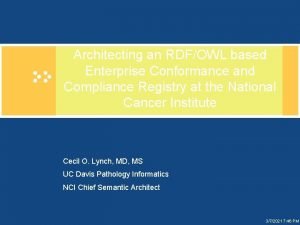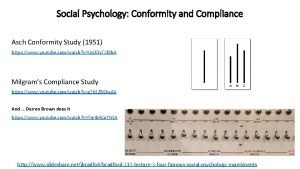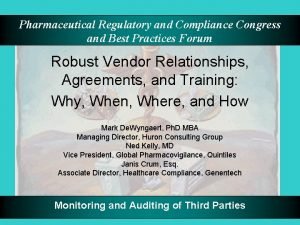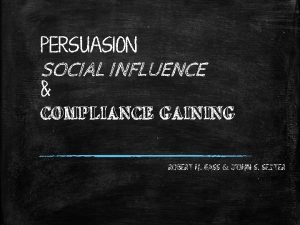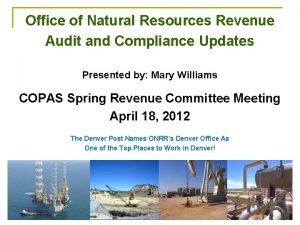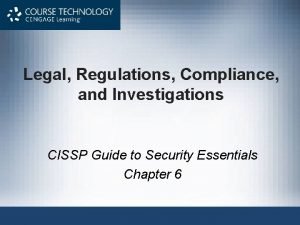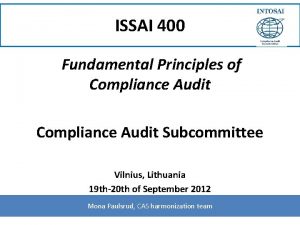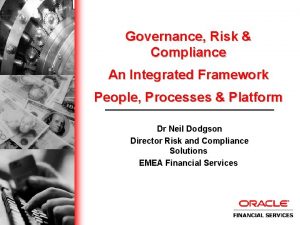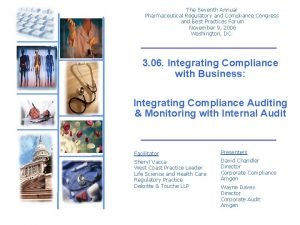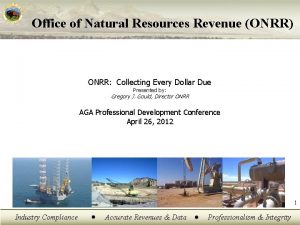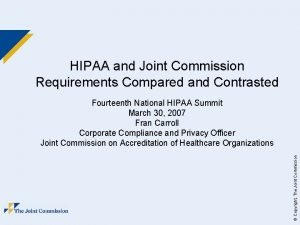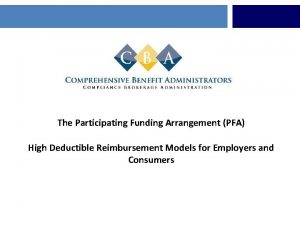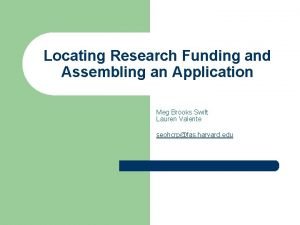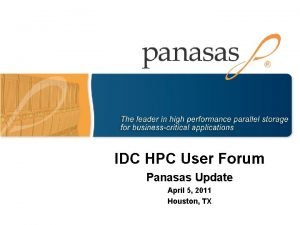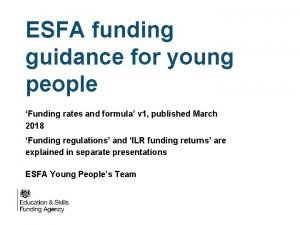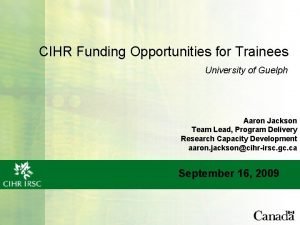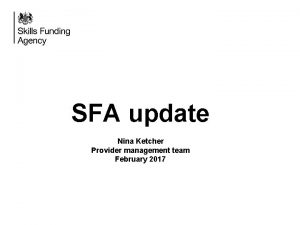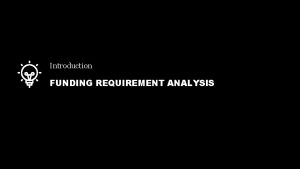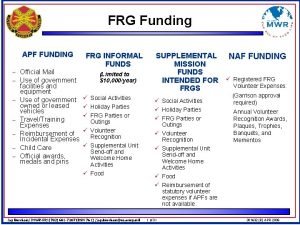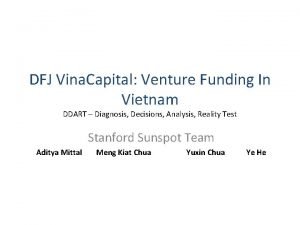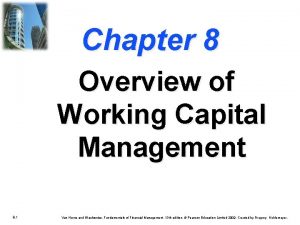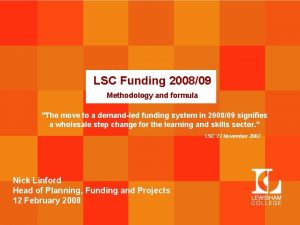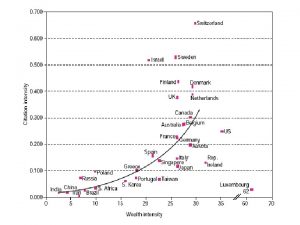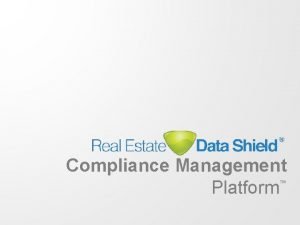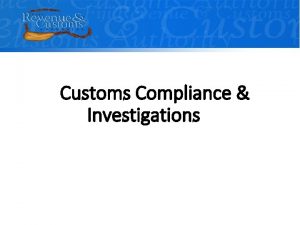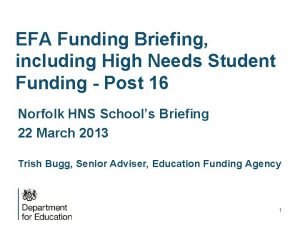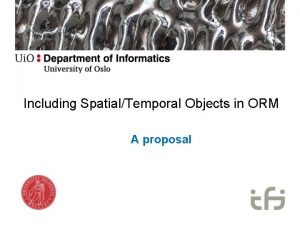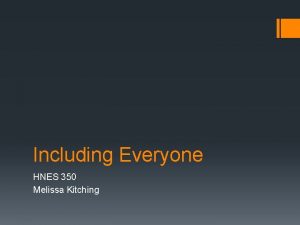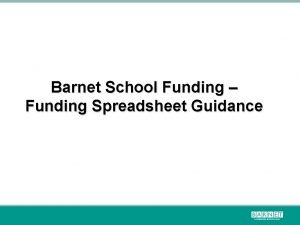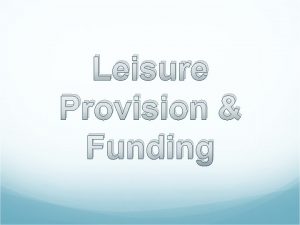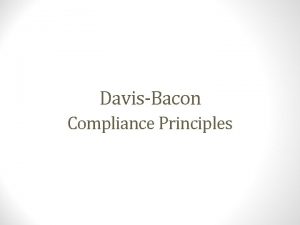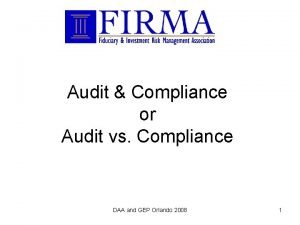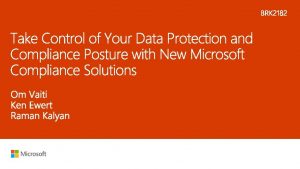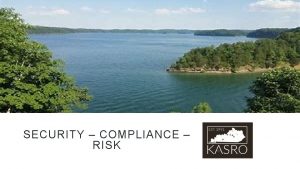LSC Funding 200809 and 200910 including Funding Compliance








































































- Slides: 72

LSC Funding 2008/09 and 2009/10 including Funding Compliance Advice and Funding Claims and Reconciliation 2008/09/10/11 (small print conditions always applies) December 2009 By Funding Policy Implementation Team 1

Funding Guidance 01 2

LSC Funding Guidance 2009/10 LSC Funding Guidance 2008/09 has been published as six separate documents, listed below: – – – Funding Rates Funding Formula Funding Principles, Rules and Regulations Learner Eligibility Guidance Funding Compliance Advice and Audit Guidance for Providers Funding Claims and Audit Returns These also apply for 2009/10 apart from where replaced and/or updated by LSC Funding Guidance 2009/10. Anything in the Addendum for 2008/09 that applies to 2009/10 will appear in the final version of LSC Funding Guidance 2009/10 book. 3

LSC Funding Guidance 2010/11 Separate YPLA and SFA Guidance Current Plan Common – Learner Eligibility Guidance incorporating main compliance rules (as in 2008/09) – Funding Claims and Audit Returns (possible for all Learner Responsive (as in 2008/09) Separate – – YPLA Funding Guidance (joint schools and FE) SFA Guidance for each Funding Stream (Tt. G/Apprenticeships/ALR) 4

The longer funding future • Unpredictable • Public Expenditure Settlements will be challenging for the sector for the years ahead • Providers will need to understand the following: – – Their cost base How their provision generates costs and income (funding) Which provision contributes to their bottom line What will meet future government targets • Requirement to negotiate with LA • Probability of further instability in Funding Body arrangements • Reductions in Rates 5

FG Addendum 2008/09 -Claims • Revised operational guidance 2008/09 including – Final tolerance for over and under performance 5% – Cap on growth claims* at 110% (5 %payable) – Cap on clawback at 85% (10% recoverable) • * but growth claims must also meet Regional LSC priority requirements • 2009/10 arrangements now changed and set out in FG 2009/10 6

Funding Claims Learner-responsive Funding Model 02 7

Funding Returns 2008/09 Learner Responsive- Involves 3 returns but 2 cash adjustments (supported by ILR data? ) Similar to previous returns (see workbook now on web): (and very similar for 2009/10) Return Date Funding Adjustments Mid-Year (electronic only) 16 February (F 02) June-July 2009 (paragraph 23 in ILR Claims & Audit Returns) End Year 7 September (F 04) Budgeting purposes only Final 23 November (F 05) January – March 2010 8

Funding Claims & Deadlines Result of late claims If final claims are not received by LSC by 23 November 2009 then result is: • No growth payments for over delivery (any mid -year payments recovered) • No tolerance of any kind for underperformance and all underperformance recovered • This is a condition of funding as set out in claim book 9 • (late claims will give LSC additional resources)

Funding Claims & Funding Formula 16 -18 Funding Claim: • • • Includes all 16 -18 learners coded A 10=A 21 and who are aged under 19 at start of the funding year; Includes all learners aged 16 -18 according to date of birth field at start of funding year and who have been coded A 10=22. New DSAT available to identify these learners (90 -03 -222); Does NOT include all learners who started programmes as 16 -18 learners but who are aged over 19 at start of funding year in the second (or subsequent year of programme) 10

Funding Claims & Funding Formula 19 + Adult Learner Funding Claim: • • • Includes all learners who started programmes in previous years as 16 -18 but who are aged over 19 at start of the current teaching year (such learners should be coded A 10=21 and whose funding is calculated using 16 -18 rates and formula (also shown as an “of which” total in Rows D of adult funding claim report; Includes all learners aged 19 or over at the start of the teaching year and who have been coded A 10=22; Does NOT include any learners who according to the ILR date of birth field are aged under 19 at start of the funding year (even if A 10=22) – see new DSAT. 11

Funding Claim & Funding Formula Both Funding Claim Reports (2) In both cases, for any learner whose total funding cash is calculated from a different funding model than that being reported on the funding claim, the following should be noted: • For these cases, both the Provider Factor (PF) & the National Rate from the other learner-responsive funding model will have been used to generate the cash figure on funding claim. 12

Funding Claims & Funding Formula Both Funding Claim Reports (3) In both cases, because learners may be reported in one funding model but whose funding is calculated using the different model the relationship of claim SLN and funding cash values may not be simply checked by applying standard formula: SLN x PF x National Rate = Funding Cash 13

Funding Claim Example Programme Cash Allocation 5, 000 Delivery 96. 3% Adult (19+) Learner-Responsive Funding ILR Values F 02 mid-year; F 04 year-end; F 05 final Manual Adjustment 4, 000 400, 000 4, 400, 000 Fully Funded SLN Co-Funded SLN 1, 000 500 10 50 1, 010 550 Total ALS High Value Claims only Total SLN 1, 500 60 1, 560 Learners Funding Value (£) 2, 000 400, 000 50, 000 200 16, 000 5, 000 2, 200 Total Funding (Programme and ALS) Funding Value (£) 4, 400, 000 416, 000 91 % 9 % Adult (19+) Learner. Responsive Funding Category Funding Value (£) Programme Cash as % of Total ILR Programme Cash: (these percentages are calculated from total claim row above) Total 416, 000 55, 000 4, 816, 000 100 % 14

Profiling 2009/10 Allocation (1) • The LSC based mid-year reconciliation in the Adult Learner Model on whole year estimates (similar in nature to 2007/08 FE in-year estimates) which will be sent to the LSC in early February 2010 together with the associated Learner Responsive ILR F 02 return. • The next slide suggests how the mid-year actual part of the estimate was validated but it is only the whole year figures that will be used in the reconciliation process. • Similar to 2008/09 mid-year estimates 15

Profiling 2009/10 Allocation (2) Profile split for mid-year and final stages Calculate from provider data returns: – In September 2009 SLN profile Mid-Year/End Year – In December 2009 SLN profile Mid-Year/Final – In December 2009 from final F 05 (2008/09), SLN profile using ILR data to determine learners started or on programme by 31 January 2009 • These profiles will be an important part of process by which partnership LSC teams agree the validity of the mid-year actual part of the 2009/10 mid-year claim. 16

Profiling 2009/10 Allocation (3) Profile split for mid-year and final stages – Use 2008/09 returns for initial profiling – Use 2008/09 new funding returns to establish in 2007/08: – Actual SLN numbers at End of Jan 2009 (Feb return) – Actual SLN numbers at Year End Return (Sept return) – Actual SLN numbers at Year End Return (November return) Calculate from provider data returns: – In September 2009 SLN profile In-Year/End Year – In December 2009 SLN profile In-Year/Final – In December 2009 from final F 05 (2008/09), SLN profile using ILR data to determine learners started or on programme by 31 January 2009 • Profiles will be agreed between LSC and Providers and this will inform decisions to improve accuracy – vital for reconciliation 17

Information needed for ALM reconciliation Mid Year and Final Reconciliation Values System rules parameters Maximum Possible Growth Funding Cap for Growth * Minimum Performance for Growth Tolerance for Underperformance SLN SLN Cash (£) * Growth is subject to a cap limit of around 3 -5 % above tolerance and agreement by LSC that growth meets LSC priorities 18

Information needed for ALM reconciliation Reconciliation Calculations Overall Variance (Out-turn - Allocation) SLN Cash (£) Growth Only Variance (Out-turn - Allocation) % % Percentage of Allocation Delivered % % In Year Growth Adjustment In Year Clawback Adjustment Total Paid In Year Allocation SLN SLN Cash (£) Final Growth Adjustment Final Clawback Adjustment SLN Cash (£) Total Funding paid for 2008/09 Year SLN Cash (£) Payment Values 19

Reconciliation-”The Rules” Rules and Aims: • Funding calculated by SLN * National Funding Rate * Provider Factor • But for reconciliation following points: – As allocation has at least 2 groups of learners, fully funded and co-funded then SLN and cash variances will differ – The National Funding Rate will be used for all reconciliation purposes – Tolerance varies according to period and according to outcome – Avoids the “Golden £” effect 2008/09 – Returns in 2009/10 – See LSC FG Addendum as to why formula does not quite apply on Funding Claims Report 20

Reconciliation-”The Rules” Rules (2008/09 Only): • ALL RECONCILIATION ADJUSTMENTS ARE IN CASH (£) • Tolerance at mid year is 5% • Tolerance at end year is 5% (and remains at 5% for over performance to meet affordability requirements). • Growth is subject to delivery of provision that meets LSC priorities as agreed by LSC partnership team • Growth adjustments capped at mid year (between 5 -8%). • Growth adjustments capped at end-year (between 5 -10%). 21

Reconciliation-”The Rules” Rules: (cont): • Funding outside tolerance is recovered at the full funding rate for under performance (subject to a cap in 2008/09) but over performance is limited by application of a maximum growth cap • Mid year adjustments are held separately from end year calculations so that no perverse incentive to either overstate or understate mid year review return • All Mid year adjustments are calculated with reference to whole year allocation and claim figures. 22

Reconciliation for Underperformance-”The Rules” • Clawback (assumes underperformance) = Claim/Estimate (£) Allocation (£) = Variance (£) If performance outside tolerance range do calculation below) + (Tolerance in reverse sign to variance) (£) = Revised Variance (at Full Rate) (£) = £ Cash recovery adjustment 23

Reconciliation 2008/09 UNDERPERFORMANCE Mid-year Claim Allocation Variance Deduct mid-year tolerance (5%) Mid-year Adjustment (Clawback) Final Claim Allocation Variance Deduct final tolerance (5%) Deduct mid-year adjustment Final Adjustment (Clawback) 90 100 - 10 + 5 - 5 - 0 24

Clawback reduction for Negative Transitional Protection B: Programme Allocation (PA) C: Transitional Protection (TP) D: Percentage TP of PA (-C/B) 1, 000 - 90, 000 9 % E: Clawback (before adjustment) F: Clawback relief for negative TP (- E x D) -100, 000 + 9, 000 G: Actual cash clawback (E + F) - 81, 000 (Note: E is always negative and F always positive) 25

Final Claim Reconciliation 2008/09 OVERPERFORMANCE Growth will also be subject to a cap limit of around 3 -5 % above tolerance and agreement by LSC that growth meets LSC priorities. The example shown in these slides shows the mid-year cap of 3% maximum growth funding is raised to 5% for final claims in 2008/09. This decision for 2008/09 only has been formally notified by the LSC in Addendum to LSC Funding Guidance 2008/09. 26

Reconciliation 2008/09 OVERRPERFORMANCE Mid-year Claim Allocation Variance Deduct mid-year tolerance (5%) Mid-year Adjustment (Growth) Final Claim Allocation Variance Deduct final tolerance (5%) Deduct mid-year adjustment (growth) Final Adjustment (Growth) ** 108 100 + 8 - 5 + 3 110 100 + 10 - 5 - 3 + 2 27

Reconciliation-”Impacts” • Growth payments will be restricted to LSC main priorities and extra funding limited to between 5 and 10 per cent of allocation with first 5% additional activity unfunded. • Growth payments will require confirmation first from LSC partnership team that growth meets LSC priorities. • Clawback calculations will only be calculated from the overall figures (total ALR funding figures). The protection against under performance is the tolerance first 5% and all underperformance below 95% is recovered (subject to a cap on clawback at 10%). 28

Reconciliation-”The Rules” Changes for 2009/10: • ALL RECONCILIATION ADJUSTMENTS ARE IN CASH (£) • It is not expected that budgetary resources will be available to pay any growth in 2009/10 • Tolerance for underperformance limited to 3% AND only given to providers delivering above 97% • Re-basing opportunity limited to 15 February 2010 to access tolerance relief • Persistent underperformance to be rewarded in 2010/11 by making over delivery easier through reduced allocations 29

Funding 2008/09 -2010/11 • Persistent underperformance defined as providers benefiting from tolerance arrangements for two consecutive years • In third year provider will be required to make up the full value of tolerance benefits from two previous years • But Providers over delivering in 2009/10 wipe out their 2008/09 tolerance benefits for purposes of future year allocations • LSC/SFA will reduce allocation in 2010/11 so provider can more easily deliver the necessary growth in 2010/11 (simple example overleaf) 30

Persistent Underperformance Allocation 2008/09 and 2009/10 = £ 1, 000 Delivery in 2008/09 = 800 (tolerance 10%) Delivery in 2009/10 = 800 (but provider rebases so delivery = 97%) Tolerance Benefit = (10% + 3%) 13% 2010/11 Allocation Start at delivery = 800 Deduct Tolerance given in 2008/09 and 2009/10 Allocation (2010/11) (13%) = 708 (over delivery of 13% needed) Provider needs to deliver at least 800 to clear tolerance slate This is expected to release resources for persistent over performance of LSC priority provision for future years 31

Funding Guidance-2010/11 • Persistent underperformance defined as providers benefiting from under performance tolerance arrangements for two consecutive years. • All 2010/11 allocations for all persistent underperforming providers will be subject to re-basing during 2010/11 to ensure that final delivery in 2010/11 meets the requirement to (will be written into Funding Guidance 2010/11): • “providers are expected to average at least 100 per cent of their funding agreements in every funding year” • The following slide shows an example of a provider re-basing in 2009/10 to achieve status and benefits of being an “ occasional underperformer” 32

Occasional Underperformance Allocation 2008/09 = £ 1, 000 and in at start 2009/10 = £ 1, 000 Delivery in 2008/09 = 900 (tolerance 5%) Delivery in 2009/10 = 901 (* over by £ 1 as allocation reduced by £ 100 in January 2010) Tolerance Benefit = (5%) 5% (2008/09) 2010/11 Allocation Start at delivery = 901 Deduct Tolerance given = - 0 (over delivered in 09/10) Allocation (2010/11) = 901 (delivery of 97% needed to avoid clawback) This has releases resources of £ 100 for provider over delivering LSC priority provision in the future 33

Reconciliation 2009/10 • Opportunities for re-basing allocations to secure a 3% tolerance or so provider can over deliver in 2009/10 so under performance “occasional” and not “persistent” limited to 15 February 2010 • Clawback profiled for 100% in March 2010 (providers cash flow suffer more from clawback than by agreeing to re-base and the clawback reflects the cash flow advantage secured by colleges with under performance between August 2009 and February 2010) • Mid-year estimates will be properly validated in February so clawback is applied where necessary in March 2010 • Underperformance properly reflected in 2010/11 allocations 34

SLN and Learner’s - Starts & Withdrawals 03 35

Start • Annual SLN will be counted when a learner is deemed to have started. • A learner is deemed to have started a learning aim once they have remained on that learning aim for the period of time defined in the table below: • Learning Aim Length in year Start Period >= 24 weeks (long course) 6 weeks 2 to 24 weeks 2 weeks <2 weeks 1 learning engagement For learning aims that span more than one academic year, starts are determined separately for each year, in line with the approach of calculating an Annual SLN value separately for each year. 36

Start and Withdrawal Learner Responsive Model A learner is considered to have withdrawn from a programme of study if they: • are known to have withdrawn or • have not attended class for 4 continuous weeks. The withdrawal date is the last date of actual attendance recorded in the ILR. If a learner has withdrawn from a programme before the start qualification period they do not generate any Annual SLN in that year. For more information, see Funding Formula 2008/09. 37

Start and Withdrawal (1) Employer Responsive Model • A learner is considered to have started a programme if they meet the minimum qualifying period – 6 weeks for courses of 24 weeks or more. • In order to claim funding, the learner must still be ‘in learning’ on the last day of the calendar month. Funding is claimed monthly in arrears in the ILR. 38

Start and Withdrawal (2) Employer Responsive Model • A learner is considered to have withdrawn from a programme of study if they: - are known to have withdrawn or - no evidence of participation for 12 weeks. • If a learner has withdrawn from a programme before the start qualification period they do not generate any SLN instalments in that year. The withdrawal date is the last date in the ILR of actual attendance. 39

Achievement Employer Responsive Model • Evidence on achievement for employer-based delivery is summarised in Annex B paragraphs 25 and 26 • These paragraphs recognise both paper and electronic records as equally valid audit evidence of funding claims for achievement for both NVQs and Apprenticeships • (either electronic or paper) 40

Annual SLN • Annual SLN is the measure used directly in the funding calculations for the purposes of calculating actuals at learning aim level for the 16 -18 and Adult Learner Responsive Models (LRM). • Annual SLN is derived from the SLN Value by application of the SLN section of the funding calculations. • Annual SLN can also be described as the process that distributes the SLN Value across funding years in order to derive the amount of activity in each year. 41

Example A learner starts a 1 year AS level on the 10 th January 2009 and finishes on the 18 th December 2009. How much SLN is paid in each year? 1. On the LAD, find the SLN Value. For 2008/09, this can be found on the Shared tab and for 2008/09 the tab for the relevant model. 2. For this course SLN Value = 150 GLH. 2. To calculate the SLN Value for a qualification: Total SLN Value = GLH 1 SLN Total SLN Value = 150 450 = 0. 333 (3 dp) Therefore, 1 AS level learning aim is worth 0. 333 SLN 42

Example For each qualification: 3. Does the programme cross a funding year? Yes – then split the programme by funding year so: Funding Year: 1 st Aug – 31 st July For 2008/09: 10 th Jan – 31 st July For 2009/10: 1 st Aug – 18 th Dec 4. Then count the days in each funding year: For 2008/09: 10 th Jan – 31 st July) = 203 days (29 weeks) For 2008/09: 1 st Aug – 18 th Dec = 140 days (20 weeks) Total days = 203 + 140 = 343 43

Example SLN per funding year = 5. Now calculate the SLN for each funding year: Year z day count X SLN Value Total day count For 2008/09: Annual SLN = 2008/09 day count X SLN Value Where z is a different year for each total day count calculation So Annual SLN = 203 X 0. 333 = 0. 197 (3 dp) 343 For 2008/09: Annual SLN = 2009/10 day count X SLN Value total day count So Annual SLN = 140 X 0. 333 = 0. 136 (3 dp) 343 44

Example 6. How much SLN is paid in each year? In 2008 = 0. 197 In 2009 = 0. 136 If the learner had taken 3 AS levels in the 1 year instead of one, then: • All AS Levels have the same SLN glh on the LAD – 150 • Therefore the SLN paid each year is multiplied by 3: – In 2008 (0. 197*3) = 0. 592 – In 2009 (0. 136*3) = 0. 408 = 1. 000 * Assumes the dates of each AS level are the same. 45

Monthly Payments Profile Payments (based on ILR start and end dates) A learner starts on a 9 month programme. In terms of programme payment (75%), the rule is: (n+1) where n is the planned months on programme. So for this example (n+1) = (9+1) = 10 instalments over 9 months. The first payment includes 2 instalments and subsequent payments are equal –so 2/10 followed by 1/10 for 9 months, (that is 100% of the 75%). 25% of total funding is then paid on achievement 46

Audit & Compliance Advice 04 47

Funding Compliance Advice - Overview Six sections in document: 1 Format and Background 2 Evidence of Learner Existence & Eligibility 3 Partner Provider Provision 4 Additional Learner Support 5 Withdrawals 6 Additional advice on Individual Qualifications and Delivery Guidance very similar since 2004, but includes new summary guidance in Annex B in respect of the Employer Responsive Funding Model. 48

Section 2: Learner Existence & Eligibility Compliance evidence of learner existence and eligibility – for all providers • Records of learner existence and eligibility – – – Learning agreements Enrolment forms Registers Withdrawal/transfer forms Achievement • Documentation – originals held by colleges not partner providers • This section is repeated in LSC Learner Eligibility Guidance 49

LSC Funding & Compliance Guidance Evidence of eligibility & existence (1) • Paragraph 41 • The enrolment form and learning agreement may be combined to form one document, which should contain all relevant information • But for each learner a provider should have as a minimum a signed combined form – Paragraph 38 • See additional guidance on Data Protection Statement that must be signed by all learners (2008/09 and 2009/10) 50

LSC Funding & Compliance Guidance Evidence of eligibility & existence (2) • Paragraph 44 • Register systems need to be proportionate in delivering benefits to providers that offset the costs involved in running these systems. The LSC offers no advice or preference on types of systems, which may be either paper-based or electronic, or a mixture of such systems. 51

LSC Funding & Compliance Guidance Evidence of eligibility & existence (3) • Paragraph 60 • Requires providers to retain records. How and method for providers to determine but records that underpin funding claims should be treated as financial and legal records. These should be consistent with provider’s usual rules and methods for financial record retention. • (paper or electronic ? ) 52

LSC Funding & Compliance Guidance • Paragraph 60 – Q & A (will be new 2009/10) • How much evidence is needed of learning to protect provider funding claims? • Providers need to risk assess their provision and it is third part training delivery that poses the highest risk • If own provision – say 16 -18 learners taught in main buildings on listed provision then after usual audit year must keep enrolment forms and evidence of external achievement but unlikely on basis of this evidence LSC could seek any recover of funds • Third party provision retention of registers etc necessary to support provider against audit recovery in future where special investigations take place 53

Annex B and Q&A 04 a 54

Annex B: Summary of Evidence Requirements for Employer Responsive Funding Model Annex includes: (with paragraphs references first) • 1 - 8 • 9 - 13 • 14 – 28 – • • • 29 – 30 31 32 33 – 34 35 - 43 PFA and overall summary LSC funding audit risk assessment Summary of evidence requirements for: learner eligibility, existence, achievement and withdrawal TPS – refer to web guidance on TPS EMA Retention of Documents Q&A on Tt. G – Funding questions answered Train to Gain – Brokers & Employers 55

Questions and Answers on the ERF Model Taken from the ILR Funding Compliance Advice and Audit Guidance 2008/09 and LSC Funding Guidance 2009/10 56

Q 1 What is qualifying supported learning? A Activities that count towards the 15 hour threshold for the higher funding rate. These are defined in the companion document Principles, Rules and Regulations, Section 9: Train to Gain, paragraph 529 and in Table 7. Q 2 There is no longer a requirement to evidence two hours of structured learning prior to a start, but what date should be recorded as the start date of the programme? A The date the learner is expected to commence their learning programme, usually the date of the first learning contact between the provider and the learner. Contact before the learning date start in respect of pre-course administration would not usually be regarded as the learning start date except where accompanied by qualifying supported learning. 57

Q 3 What evidence is required prior to starting a learner? A A provider needs a signed enrolment form/learning agreement confirming the learner is eligible for LSC funding and in accordance with the guidance in Section 2, paragraphs 35– 41. The start date entered on the ILR should accord with the answer to the question above. All the paperwork required under the guidance must be completed at some stage during the learner’s programme. Q 4 For a course longer than 24 weeks, do providers have to wait until 6 weeks have elapsed before they can claim for their learners? A No, the claim is made as soon as a learner has started the programme. If a learner leaves within the first 6 weeks (42 days), any funding paid will be recovered in the following month after the provider has updated the ILR record. 58

Q 7 For a learner who started in 2007/08, how many hours of activity does a provider need to evidence to justify the higher rate? A There are two parts to this answer: If the learner completes on or before 31 July 2008, then evidence of 20 hours of qualifying supported learning is needed to support claims for a higher rate funding. If the learner completes on or after 1 August 2008, then evidence of 15 hours of qualifying supported learning is needed. Q 8 If a learner who started in 2007/08 on the lower rate continues their programme in 2008/09 but receives at least 15 hours of qualifying supported learning activity before completing it, are they eligible for the higher rate funding? A Yes. The LSC auditors will expect to be able to see the normal supporting documentary evidence to justify any such claims. 59

Revised Guidance 2009/10 ONLY Q 7 (2009/10) For a learner who started in 2008/09, how many hours of activity does a provider need to evidence to justify the higher rate in 2009/10? A There are two parts to this answer: If the learner completes on or before 31 July 2009, then evidence of 15 hours of qualifying supported learning is needed to support claims for a higher rate funding. If the learner completes on or after 1 August 2009, then the learner is funded at the new single rate for 2009/10. The funding rate for 2008/09 should normally be left at the previous vale as providers not required to directly count hours of support in 2009/10 60

Q 9 How does the provider decide whether a learner should be funded at the higher or lower rate? A The provider makes a judgement based on the initial assessment process. In 2008/09 these processes and judgements will be reviewed by LSC auditors. They will expect to see evidence of sound judgements as to funding rate determination that take into account all the LSC guidance in this respect. These audit reviews will also compare the mix of higher and lower funding rates in the ILR with the provider tender specification or any revised profile agreed with the LSC. This guidance does not apply in 2009/10 BUT may be worth knowing in the longer term as you never know with funding in the (past) future. 61

Q 10 If a learner is funded at the higher rate but then leaves before they complete the programme, and therefore before the provider has evidence of the 15 hours, is the funding reduced to the lower rate? A No. The LSC does not normally expect the funding rate to be adjusted because of withdrawal. The LSC employerresponsive funding model will stop provider payments and, where appropriate, recover a proportion of programme funding for withdrawals entered on ILR returns for a later month. However, LSC auditors may review the funding rate claims for withdrawn learners made by providers who have much higher than average withdrawal rates and who cannot provide the normal evidence of the expected qualifying supported learning associated with higher rate funded learners. This will NOT be an issue in 2009/10 62

Additional Learner Support – Allocations and Out-turns 2008 -10 05 63

ALS Allocations 2008 -9 -10 The learner-responsive ALS allocation system is changed between 2008 -09 and 2009 -10 as follows: ALS Allocation 2008 -09 ALS Allocation 2009 -10 ALS allocation for all learners below £ 5, 500 (includes the first below £ 5, 500 (excludes first £ 5, 500 for learners above £ 5, 500) ALS allocation for learners Total ALS allocation for learners above £ 5, 500, but capped at above £ 5, 500 but capped at £ 19, 000 (excludes first £ 5, 500) £ 19, 000 (includes first £ 5, 500) 64

2008/09 and 2009/10 ALS 2008/09 First £ 5, 500 High Cost £ 5, 500 - £ 19, 000 2009/10 UP TO £ 5, 500 High Cost Claims Above £ 5, 500 (Capped at £ 19, 000) 65

ALS Claims/Out-turns The Funding Claim reports need to include an ALS out-turn that is calculated solely on basis of allocation formula. Purpose of data two-fold: Provide out-turn that matches allocation and satisfy the LSC own regulatory requirements; Provide meaningful out-turn data to support ALS allocations for 2009 -10 and 2010 -11 66

ALS Claims/Out-turns ALS funding is NOT subject to any formal reconciliation in 2008/09. LSC partnership teams are expected where the provider delivery is clearly very significantly different to planned allocation to review ALS expenditure against the ALS allocations and it may be necessary in a few very exceptional circumstances to adjust the ALS allocation. 67

ALS Formula Claims Funding Claims for 2008/09 will include an ALS formula driven out-turn value. This calculation is set out on the following slides. Funding Claims for 2008 -09 will also show the actual ALS costs entered on provider ILR returns. The next slide shows the proposed LIS ALS report 68

ILR Funding Estimates/Claims 2008/09 (*Mid-year Estimate/Year-end Estimate/Final Claim) (*Delete as appropriate) 69

ALS Out-turn Formula Start with: (a) Provider ALS cash allocation (b) Provider SLN allocation (c) ALS per SLN is a/b Out-turn formula ALS is: Out-turn SLN x (c) = Out-turn ALS cash 70

ALS Costs out-turn Start at individual learner records: (x): ALS cash expenditure below £ 5, 500, but if below minimum threshold ALS cash = 0; (full-time <£ 501= £ 0; parttime <£ 171=0) (y): All ALS cash expenditure above £ 5, 500, capped at £ 19, 000 Total ALS ILR cost: Sum of (x) and (y) above Variance: Difference between total recorded ALS cash and formula generated figure 71

LSC Funding 2008/09 and 2009/10 including Funding Compliance Advice and Funding Claims and Reconciliation 2008/09/10 December 2009 By Funding Policy Implementation Team 72
 Tecumseh junior high
Tecumseh junior high Glc gsc
Glc gsc Lone star college nursing program cost
Lone star college nursing program cost Lsc perks
Lsc perks Lsc lyngby
Lsc lyngby Purosil llc
Purosil llc Invertebrates including snails slugs and mussels
Invertebrates including snails slugs and mussels Invertebrates including snails slugs and mussels
Invertebrates including snails slugs and mussels Printed words including dialogue
Printed words including dialogue It encompasses several different aspects, including
It encompasses several different aspects, including How to ice a quote
How to ice a quote The mutcd states all workers
The mutcd states all workers Animals including humans year 6
Animals including humans year 6 Animals including humans
Animals including humans Animals including humans year 4
Animals including humans year 4 Benito doesn't don't know the answer
Benito doesn't don't know the answer Printed words including dialogue
Printed words including dialogue How many faces does square pyramid have
How many faces does square pyramid have Including samuel discussion questions
Including samuel discussion questions Funding and tenders portal
Funding and tenders portal Kebutuhan dana
Kebutuhan dana Oracle grc
Oracle grc Ncrq national compliance and risk qualifications
Ncrq national compliance and risk qualifications Motivational axioms
Motivational axioms Contractor compliance and monitoring inc
Contractor compliance and monitoring inc Azure pci dss responsibility matrix
Azure pci dss responsibility matrix Hr governance risk and compliance
Hr governance risk and compliance Eeoc training for managers
Eeoc training for managers Types of conformity
Types of conformity Conformity and compliance
Conformity and compliance Adot - business engagement and compliance (beco)
Adot - business engagement and compliance (beco) Lung compliance formula
Lung compliance formula Compliance gaining definition
Compliance gaining definition Njdep ust regulations
Njdep ust regulations Eeo compliance training for managers and supervisors
Eeo compliance training for managers and supervisors Njdep compliance and enforcement
Njdep compliance and enforcement Toughness on a stress strain curve
Toughness on a stress strain curve Pharmaceutical regulatory and compliance congress
Pharmaceutical regulatory and compliance congress Onrr compliance
Onrr compliance Downstream entity examples
Downstream entity examples Clocs compliant
Clocs compliant Conformance and compliance
Conformance and compliance Compliance psychology definition
Compliance psychology definition Pharmaceutical regulatory and compliance congress
Pharmaceutical regulatory and compliance congress Persuasion social influence and compliance gaining
Persuasion social influence and compliance gaining Onrr reporting and compliance
Onrr reporting and compliance Legal regulations compliance and investigation
Legal regulations compliance and investigation Issai 400
Issai 400 It risk and compliance
It risk and compliance Pharmaceutical regulatory and compliance congress
Pharmaceutical regulatory and compliance congress Pharmaceutical regulatory and compliance congress
Pharmaceutical regulatory and compliance congress Federal onrr reporting and compliance
Federal onrr reporting and compliance Joint commission hipaa
Joint commission hipaa Participating funding arrangement
Participating funding arrangement Marcus scheuren
Marcus scheuren Hcrp summer funding
Hcrp summer funding Panasas funding
Panasas funding Garuda aerospace funding
Garuda aerospace funding Funding guidance for young people
Funding guidance for young people Cihr funding opportunities
Cihr funding opportunities Cape funding list
Cape funding list Unit 5 operating your business lesson 1 funding sources
Unit 5 operating your business lesson 1 funding sources Apprenticeship funding bands
Apprenticeship funding bands Unlimited funding
Unlimited funding Egap british academy
Egap british academy Apprenticeship technical funding guide
Apprenticeship technical funding guide Paintcollar funding
Paintcollar funding Funding requirements example
Funding requirements example Apf funding
Apf funding Vina meaning in vietnam
Vina meaning in vietnam Product funding model
Product funding model Funding requirements example
Funding requirements example



